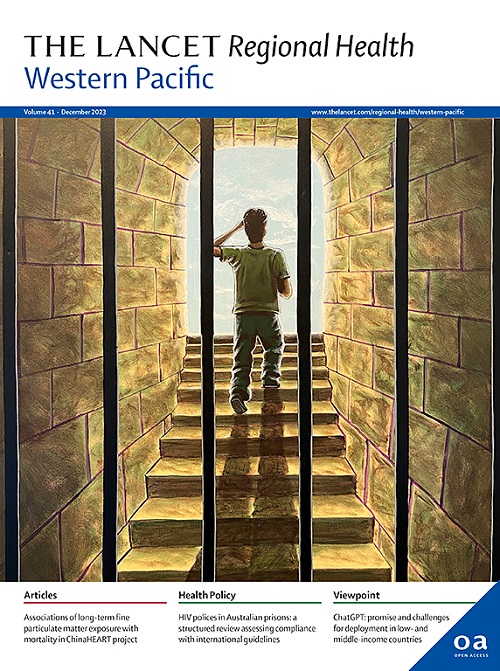Epidemiology of community acquired sepsis in children in Australia and New Zealand: a multicentre prospective cohort study
IF 8.1
1区 医学
Q1 HEALTH CARE SCIENCES & SERVICES
引用次数: 0
Abstract
Background
Paediatric sepsis epidemiology is unclear due to variability in case ascertainment. We describe the epidemiology of community acquired sepsis in Australian and New Zealand children using the Phoenix sepsis criteria.
Methods
Prospective observational study conducted in 11 hospitals through the Paediatric Research in Emergency Departments International Collaborative (PREDICT) Network from April 2021 to December 2023. Children aged 0–<18 years with suspected sepsis were included. Demographic information, therapies administered, and outcomes were collected, and the Phoenix sepsis criteria were applied.
Findings
Of 822,072 children assessed, 6232 (0.8%) children had suspected sepsis and 306 (<0.1%) met the Phoenix sepsis criteria. Children who met the Phoenix sepsis criteria had higher rates of intensive care unit admission (245/306; 80.1% vs 1080/6232; 17.3%), vasoactive infusion (144/306; 47.1% vs 179/6232; 2.9%) mechanical ventilation (146/306; 47.7% vs 251/6232; 4.0%), and extracorporeal life support (12/306; 3.9% vs 13/6232; 0.2%) compared to the overall cohort. Intensive care unit and hospital length of stay were longer for those meeting Phoenix sepsis criteria than for the overall cohort (median 48.4 h vs 79.8 h and 69.7 h vs 189.8 h, respectively). Overall, 87/6232 (1.4%) patients died within 90 days, 42/306 (13.7%) of whom met Phoenix sepsis criteria.
Interpretation
Hospitalisation for suspected sepsis was relatively infrequent. The Phoenix sepsis criteria identified children with more severe illness and worse outcomes, but underestimated the overall burden of sepsis.
Funding
The National Health and Medical Research Council, the Medical Research Futures Fund, The Royal Children's Hospital Foundation, and the Victorian Government.
澳大利亚和新西兰儿童社区获得性败血症的流行病学:一项多中心前瞻性队列研究
本文章由计算机程序翻译,如有差异,请以英文原文为准。
求助全文
约1分钟内获得全文
求助全文
来源期刊

The Lancet Regional Health: Western Pacific
Medicine-Pediatrics, Perinatology and Child Health
CiteScore
8.80
自引率
2.80%
发文量
305
审稿时长
11 weeks
期刊介绍:
The Lancet Regional Health – Western Pacific, a gold open access journal, is an integral part of The Lancet's global initiative advocating for healthcare quality and access worldwide. It aims to advance clinical practice and health policy in the Western Pacific region, contributing to enhanced health outcomes. The journal publishes high-quality original research shedding light on clinical practice and health policy in the region. It also includes reviews, commentaries, and opinion pieces covering diverse regional health topics, such as infectious diseases, non-communicable diseases, child and adolescent health, maternal and reproductive health, aging health, mental health, the health workforce and systems, and health policy.
 求助内容:
求助内容: 应助结果提醒方式:
应助结果提醒方式:


